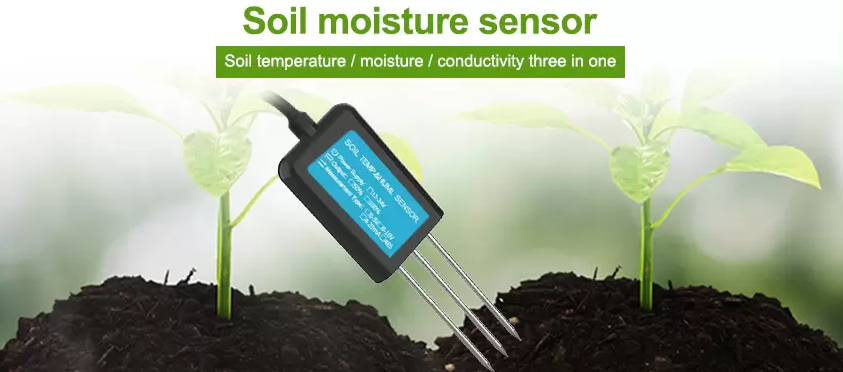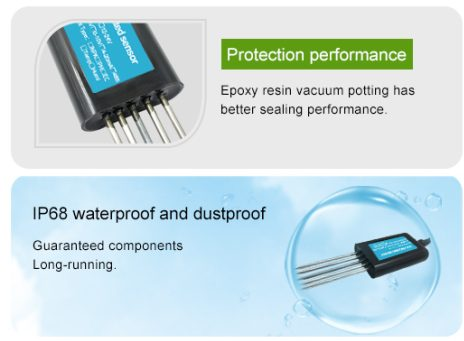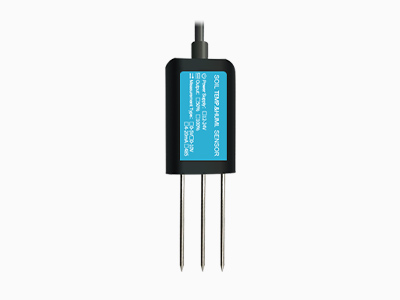In the age of precision agriculture, soil moisture meters are a key tool for changing crop management and environmental monitoring.This instrument serves as an essential bridge between empirical data collection and informed decision-making in agricultural practices. By providing accurate, real-time measurements of soil water content, it empowers farmers to optimize irrigation schedules, prevent over- or under-watering, enhance crop yields, and contribute to sustainable land use.
Understanding Soil Moisture Meter
A soil moisture meter is a device quantify the volumetric water content (VWC) within the soil profile, which directly impacts plant growth, nutrient uptake, and overall soil health. There are various types of soil moisture meters, each employing distinct measurement principles:

- Tensiometers: These devices measure the suction pressure exerted by the soil on water molecules, which corresponds to the soil’s water potential. As soil dries out, the tension increases, pulling water up into the ceramic cup connected to a vacuum gauge via a water-filled tube. The reading reflects the amount of energy required to extract additional water from the soil.
- Electrical Resistance Sensors: Based on electrical conductivity changes in the soil, these sensors determine soil moisture levels. When the soil is wetter, its electrical conductivity rises because water conducts electricity better than air. By measuring the resistance between electrodes embedded in the soil, these sensors convert this property change into a soil moisture reading.
- Frequency Domain Reflectometry (FDR): FDR sensors send electromagnetic waves into the soil and analyze the reflection pattern. The dielectric constant of the soil, influenced by water content, alters how much signal bounces back to the sensor. This method provides non-invasive, continuous monitoring of soil moisture without direct contact with the soil matrix.
- Neutron Scattering and Capacitance Probes: While less commonly due to their complexity or cost, neutron scattering probes detect hydrogen atoms in soil water through interactions with neutrons, while capacitance sensors measure changes in electrical charge based on the dielectric properties of the soil.
Applications of soil moisture meter
The emergence of the soil moisture meter change the way irrigate crops:

- Efficient Irrigation Management: By continuously monitoring soil moisture, farmers can apply water precisely when and where it’s needed, avoiding excessive watering that can lead to waterlogging, leaching of nutrients, and increased energy consumption. It also helps prevent drought stress, ensuring plants have adequate hydration throughout their growth cycle.
- Crop Health Monitoring: Soil moisture data can flag areas of a field experiencing water stress before visual symptoms appear, allowing for timely interventions such as localized irrigation or fertigation. This proactive approach enhances crop resilience and maintains optimal growth conditions.
- Soil Health Improvement: Consistent monitoring of soil moisture aids in maintaining soil structure and promoting beneficial microbial activity. It also helps in managing soil compaction and erosion risks associated with inappropriate moisture levels. This data informs decisions about tillage practices, cover cropping, and nutrient management strategies.
- Variable Rate Application (VRA): Integrated with GPS technology, soil moisture data enables variable rate application of water, fertilizers, and pesticides. By applying inputs according to actual soil moisture conditions, VRA reduces waste, improves resource efficiency, and mitigates environmental pollution.
- Climate-Smart Agriculture: Soil moisture meters provide valuable information for weather forecasting and climate modeling. They help farmers adapt to changing precipitation patterns, anticipate droughts or floods, and plan for long-term sustainability.
Integration with Modern Farming Technologies

Modern soil moisture meters often feature wireless connectivity, integrating seamlessly with IoT platforms, remote sensing technologies, and precision farming software. This integration allows for automated data collection, real-time analysis, and control of irrigation systems. With AI algorithms, the interpretation of complex soil moisture patterns can predict crop water requirements and suggest tailored management actions.
Challenges and Future Directions
Despite their significant benefits, soil moisture meters face challenges, including calibration variability across different soil textures, sensitivity to installation depth, and longevity in harsh environments. Moreover, the effective use of these tools requires a deep understanding of local hydrology, soil properties, and crop water demands.
Looking ahead, advancements in sensor miniaturization, material sciences, and data analytics will drive further innovation. The future of soil moisture meters may include self-calibrating, multi-depth sensors, and more sophisticated predictive models. Additionally, coupling satellite-based remote sensing with ground-level data could provide comprehensive insights into regional water dynamics.
In conclusion, the soil moisture meter is a cornerstone technology in precision agriculture, enabling farmers to make data-driven decisions that conserve water resources, boost yields, and promote environmentally responsible farming practices. As technology continues to evolve, the role of soil moisture meters in enhancing global food security and environmental stewardship becomes increasingly indispensable. Through these instruments, we can ensure the wise use of our finite water resources while optimizing agricultural productivity and safeguarding our planet’s ecological balance.
